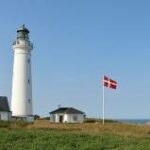Holidays in Denmark

In Denmark, the holidays are very important. Many Danes use the time off work to go to the holiday home and traditional festivals are celebrated all over the country. For vacationers the holidays are often a special experience. It is therefore worthwhile to plan ahead. Since many public holidays coincide with those in Germany, this is also good for travelers.
Most shops remain closed or announce severely restricted opening hours on public holidays in Denmark.
Overview
New Year’s Day on January 1
Fastnacht – on the Monday after the 7th Sunday before Easter Sunday
Fundamental Thursday – three days before Easter Sunday
Karif Friday – two days before Easter Sunday
Easter Sunday – after the first full moon in spring
Easter Monday – one day after Easter Sunday
Penitence and Prayer Day (“Store Bed Day”)- on the 4th Friday after Easter Sunday
Ascension Day – 39 days after Easter Sunday
Pentecost – 49 days after Easter Sunday
Pentecost Monday – 50 days after Easter Sunday
1st Christmas Day – on December 25
2nd Christmas Day – on December 26
Danish Constitution Day (Grundlovsdag) – on June 5
Worth knowing about selected holidays
Store Bededag
On the Day of Prayer and Repentance, which has been a public holiday since the late 17th century, all work must rest. Also the schools remain closed. As traditional food warm rolls are served in the evening. These wheat rolls were originally made the day before, a working day, and could well be baked again on the non-working holiday.
In Copenhagen, it is a tradition to take a walk on the Christianshavn Wall.
May 1 and May 5
Although officially not a holiday (but in many places a nonetheless free), the international workers’ day of struggle and celebration is celebrated in style with many events. There are nationwide folk festivals, parades and traditionally also political speeches.
On the eve of the anniversary of the liberation from German occupation on May 5, 1945, many Danes still place candles in their windows.
Constitution Day
The first Danish constitution came into force on June 5, 1849. To this day, folk festivals are held in many places to mark the occasion. At the same time, people celebrate Father’s Day exuberantly.
Christmas and New Year
One of the country’s special traditions is the calendar candles, which until 1942 were even made by hand together with the children. Today, people light a (mostly industrially produced) calendar candle every day and thus feverishly await Christmas Eve. On Advent Sundays, the candles on the Advent wreath are also lit – one on the 1st Advent, two on the 2nd, and so on.
As in Germany, Christmas days tend to be reserved for family. New Year’s Eve is a time to get together with friends for some boisterous partying. The New Year’s Eve is rung in at 6 pm with the New Year’s speech of the Danish Queen.












